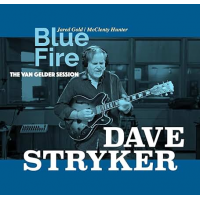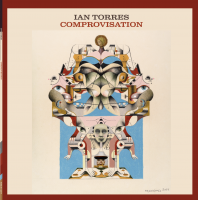Home » Jazz Articles » Album Review » Mata Atlantica: Retiro e Ritmo
Mata Atlantica: Retiro e Ritmo
Retiro e Ritmo is deceptive, calling attention to a source of worldwide calamity all the while proffering some righteously beautiful music. Initiator and co- producer Mathias Derer presents a political project that utilizes the best that the aesthetic community can offer. Its music tends towards the otherworldly even as it redirects our attention in the direction of something tangible and increasingly evanescent. There is tragedy embedded in this Song of the South, but it is hard not to groove to the danceable vibe expressed in the floating lilt of "Quando Como Aranhas," which is loaded with pervasive ambient sound effects, trinkles of percussive punctuations and some jazzy keyboard accents. This music is the opposite of a doom-and-gloom treatise. Instead, Retiro e Ritmo mirrors the historic ecstasy of what has been and hopefully still is life among those indigenous as well as the recently arrived. It is not a pointing toward a shangri-la that's fading away but a reminder of what this Brazilian culture has offered the world for longer than all of us have been alive.
As "Quando" amply demonstrates in its 10-minute oration, there are many twists and turns to this music, the song mutating, resisting standard arrangement strategies, opting to take us into different terrains under one umbrella of sonic sheens. "Sempre O Mesmo" returns us to the tantalizing vocals that meander through this music like a snaky river, the multifarious mingling with the plangent message of the here-and-now. Think of the song's bouncy rhythms and recurrent choruses as a kind of bossa pop, multilayered, fortified with some rigorous fusions. This tune demonstrates how the sound of surprise (so often invoked when one thinks of the best jazz has to offer) can elevate expectations all the while confounding them.
Tropical field recordings are aligned with the hot players onboard. At times, the mix is reminiscent of the studio wizardry Teo Macero unleashed with later Miles Davis recordings, but with flourishes that focus not on particular players and instead on the ensemble rollout provided by individual musicians. Speaking of such, Mathias Derer must be commended for corralling such talents as major contributor Markus Reuter, Gary Husband and the Mastelottos team of Deborah and Pat. But then, there is an enlarged cast of something like 17 artists here. The challenge, no doubt, was to prevent traffic jams, a mishmash, something that "Mata," with its Weather Report-ish fanciful dancing and sing-songy prancing barely escapes, Brian Krock's saxophone harping leading the charge.
All true art is devoid of preaching. Instead, the best of it heads in the direction of letting listeners decide for themselves, the pleading a result of an inner urge. As Retiro e Ritmo continues, the reverb has a tendency to distract from track to track, giving the feel of an echo chamber and the tendency to level the music, smooth it out, when, in fact, what is wanted is more texture, less studio ambience and more, for lack of a better word, rainforest. That said, one can come to recognize that this is music not just for entertainment but something that goes beyond the commonplace, marketplace semantics of most music that seeks a wider audience. The environmental group AMAP Brazil is embedded here, an added player, a pushback against the recurrent rightwing thrust of so much contemporary Brazilian politics.
The synthetic sheen that pervades much of this recording is minimized by the heartfelt and unwieldy and unpredictable and varying expressions of a combined group of artists who come off as self-effacing, with so much of what sounds like Portuguese singing an impermeable complement to the ongoing grooves laid down throughout.
The understated, elongated, climactic 23-minute "O Fim Do Mundo" revisits Brian Eno, Steve Roach and John Serrie's planetary sonic experiments but with an added, ongoing no-place-like-home sentiment—for there's no Plan B when it comes to our time here as humans on this planet. Rather than being pedantic, this music has the potential to move us both emotionally and politically. A potentially rare feat. Very rare.
As Mathias asked—with words that may have the listener enter a kind of dreamlike state despite the sobering fact that more that ninety per cent of the Mata Atlantica has been destroyed—"How could I contribute musically to bring more attention to this fragile habitat, while recreating its soundscape?"
Track Listing
Candles In Brazil; Quando Como Aranhas; Sempre O Mesmo; Mata; Se Deus Quiser; Um Beijo Selvagem; O Fim Do Mundo.
Personnel
Mata Atlantica
band / ensemble / orchestraMarkus Reuter
guitar, electricGary Husband
drumsPat Mastelotto
drumsRaphael Preuschl
bassAndi Pupato
percussionBrian Krock
saxophoneLuca Calabrese
trumpetAralee Dorough
fluteColin Gatwood
oboeCharlotte Pelgen
vocalsZoey Gley
vocalsGraça Cunha
vocalsLisa Fletcher
vocalsTobias Reber
electronicsAlbum information
Title: Retiro e Ritmo | Year Released: 2022 | Record Label: 7D Media
Tags
About Mata Atlantica
Instrument: Band / ensemble / orchestra
PREVIOUS / NEXT
Support All About Jazz
 All About Jazz has been a pillar of jazz since 1995, championing it as an art form and, more importantly, supporting the musicians who make it. Our enduring commitment has made "AAJ" one of the most culturally important websites of its kind, read by hundreds of thousands of fans, musicians and industry figures every month.
All About Jazz has been a pillar of jazz since 1995, championing it as an art form and, more importantly, supporting the musicians who make it. Our enduring commitment has made "AAJ" one of the most culturally important websites of its kind, read by hundreds of thousands of fans, musicians and industry figures every month.























